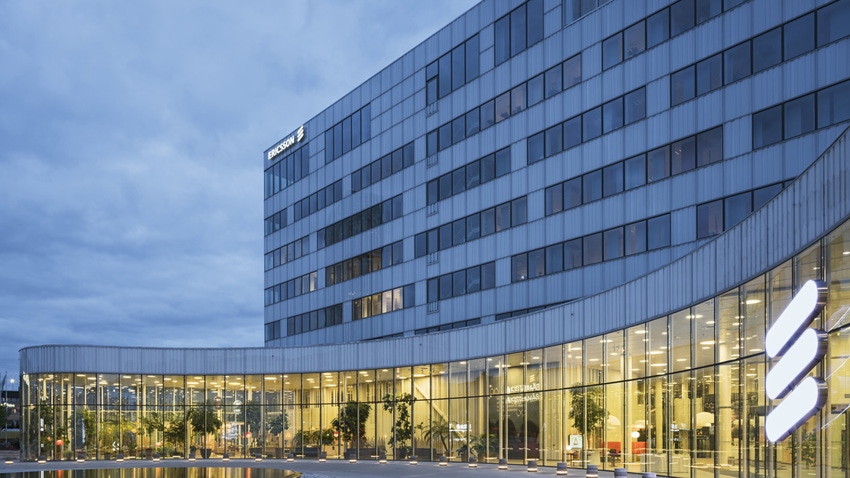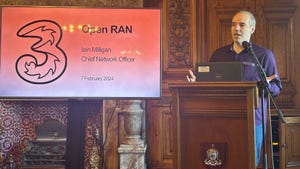
The mobile telecom industry typically deals in ten-year upgrade cycles. But just five years into the global rollout of 5G, its big western vendors are having a miserable time. Sales at Nokia's mobile networks business group were down 5% year-over-year for the first nine months of 2023, tumbling 24% for the third quarter alone. Ericsson's equivalent networks unit reported corresponding drops of 6% for the first nine months and 14% for the third quarter. Both Nordic vendors, which are due to report full-year figures this week, are cutting thousands of jobs in response to the slowdown. And 2024 is unlikely to bring much joy.
Market research firm Dell'Oro has penned a broad assessment of what lies ahead this year for the SDxCentral website, and it reads like a Scandi noir drama with the odd moment of light relief. The main prediction is that radio access network (RAN) sales will shrink for the second year in a row. Dell'Oro is naturally waiting on the publication of fourth-quarter results before it says what RAN sales were for 2023. But it forecasts a $5 billion drop in annual market revenues between 2022 and 2024, to about $35 billion.
Omdia, a sister company to Light Reading, seems broadly to concur on the general trajectory. While yet to publish its detailed RAN outlook for 2024, the company is also guiding for more shrinkage, albeit at a slower rate than it saw last year. "We expect the decline to continue in 2024, but to be less pronounced than in 2023, and the RAN market size to reach between $37 billion and $40 billion in 2024," said Remy Pascal, a principal analyst with Omdia, by email.
In December, when Omdia last crunched the numbers, it estimated the RAN market would generate sales of about $40.2 billion for 2023, down from about $45.2 billion the year before. In the worst-case scenario, then, sales could drop another 8% this year. The decline has been heavily blamed on a sharp contraction in North America, where big telcos have slashed capital expenditure on network equipment after a splurge in previous years.
Rising tides don't float all boats
The consistent message from the Nordic vendors has been that a rising tide of data traffic on mobile networks will eventually force operators to build additional capacity. "[The] high-paced mobile data growth, further spurred by new use cases, is the underlying driver for the market to recover to a more normal level," said Börje Ekholm, Ericsson's CEO, in the introduction to the company's third-quarter report. "We are also relatively early in the 5G upgrade cycle with 75% of all radio basestation sites, outside China, not yet updated with 5G mid-band."
Unfortunately, networks seem to be coping better with this traffic growth than equipment vendors would like. Nor have telcos seen much 5G-generated uplift in sales, despite Ericsson's attempts to correlate 5G rollout with an improvement in average revenue per user. There is still no mobile application that demands a 5G as opposed to a 4G connection. Even if there were, it is doubtful this would boost consumer spending on telecom services. A likelier scenario is that money would flow to application developers.
Vendors are understandably worried, realizing their customers must grow if they are to sell much more equipment in future. It explains last year's chatter about "network exposure." Consumers might not spend more to receive a higher-speed, lower-latency connection, or for other network features. But application developers might. Through an initiative called CAMARA, the industry is trying to standardize the "northbound" application programming interfaces (APIs) between the 5G network and the services that sit on it. Developers would then pay for access to those APIs, using them to produce 5G-tailored applications. Or such is the hope.
But in the year since last year's Mobile World Congress, when the GSM Association made a fuss about its "Open Gateway" APIs initiative, there has been little sign of commercial progress. Ericsson, meanwhile, has written down Vonage, the company it bought for about $6.2 billion to support these API-related efforts, by nearly $3 billion. Investors are not persuaded Ericsson is on the verge of big things. Since July 2022, when it bought Vonage, its share price has fallen by 22%.
Doom, gloom and open RAN
It is not all "doom and gloom" in RAN, said Stefan Pongratz, a Dell'Oro analyst, in a LinkedIn post. India's speedy rollout of 5G last year was a clear positive for both Ericsson and Nokia results-wise. While Dell'Oro thinks overall wireless capital expenditure in North America will fall again this year, it expects the amount spent on RAN products to increase, "implying a greater portion of the capex will be allocated towards the RAN segment in 2024."
Yet there are signs the main Indian operators have now bought most of the 5G basestations they need, with Nokia CEO Pekka Lundmark noting "some moderation in the pace of 5G deployment in India" when he wrote his introduction to the company's third-quarter report. And if the situation outside 5G-mad China – now bristling like a porcupine with 5G masts – is bad for the Nordic suppliers, it looks even worse for many of their challengers.
Despite telco efforts to inject competition via "open" RAN, the market remains "concentrated," said Dell'Oro. The top eight vendors – Huawei, Ericsson, Nokia, ZTE, Samsung, NEC, Fujitsu and Datang Mobile – accounted for 98% of the global market during the first nine months of 2023, Dell'Oro's data shows, leaving a 2% sliver of sales split between the bottom 30 companies.
Regardless of open RAN, "more suppliers increasingly accept and realize that the traditional macro MBB [mobile broadband] market is extremely challenging to enter using the feature parity and pricing approach," said Dell'Oro. That acceptance is prompting a "pivot" to segments where there is a greater chance of success, it reckons, including fixed wireless access, private wireless, neutral host and mobile broadband in rural and low-income markets.
Open RAN, though, is projected to account for between 7% and 10% of the RAN market this year. The concept was supposed to be about combining products from various specialists at the same mobile site, instead of buying an entire system from one vendor. Yet the biggest deal hailed as an open RAN one so far has gone to Ericsson. Under its $14 billion contract with AT&T, announced in December, it will initially stump up purpose-built baseband, RAN software and radios, the giant US telco has confirmed. For virtualization enthusiasts and smaller players, deals like that do not bode well.
About the Author(s)
You May Also Like












